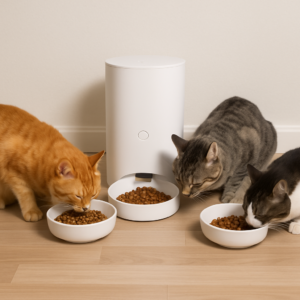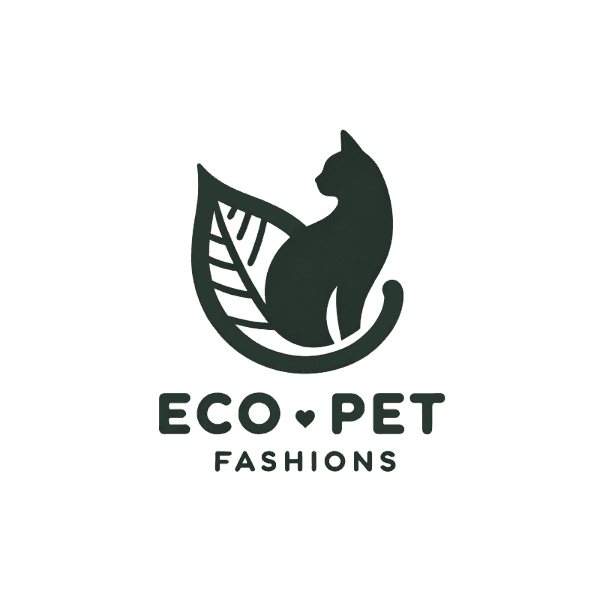Pet food manufacturers are under increasing pressure to meet consumer demands for high-quality, safe, and sustainable products. However, behind the scenes, these companies face numerous challenges when managing their supply chains. From sourcing raw materials to ensuring compliance with international regulations, each stage of the supply chain introduces complexities that must be carefully managed. In this article, we will explore the key supply chain challenges facing the pet food industry, and how companies can successfully overcome them to thrive in this highly competitive market.
The Challenge of Raw Material Sourcing
One of the most significant challenges in the pet food industry supply chain is sourcing high-quality raw materials. Pet food requires a mix of ingredients, including meat, grains, and vegetables, often sourced from multiple regions around the globe. Ensuring the safety and quality of these materials is crucial, as any compromise can lead to serious health risks for pets and damage to the brand’s reputation. The volatility of raw material prices and availability can also cause disruptions, affecting production schedules and the final product’s cost.

The availability of certain raw materials, especially premium ingredients like organic meats or specialty grains, can fluctuate due to environmental factors, trade restrictions, or market demand shifts. For example, a bad harvest season could lead to a scarcity of grain, causing prices to skyrocket. These unpredictable changes put manufacturers under immense pressure to find reliable suppliers while maintaining cost-efficiency.
To combat this, companies need to establish strong, reliable relationships with multiple suppliers across different regions to reduce the risk of disruption. Additionally, investing in sustainable sourcing practices not only ensures a consistent supply of high-quality materials but also aligns with the growing consumer demand for environmentally responsible products.
Choosing the Right Manufacturing Option
Pet food companies generally have three options when it comes to manufacturing: producing in-house, partnering with a private label manufacturer, or outsourcing to a co-packer. Each approach comes with its own set of advantages and challenges.
In-house manufacturing offers the most control over quality and production timelines but requires a substantial capital investment. This includes the costs of building and maintaining facilities, acquiring machinery, and hiring skilled labor. Private label manufacturing allows companies to leverage an existing production facility to create branded products without the need for their own production lines. However, it offers less control over the production process and the final product.

Outsourcing to a co-packer is a popular option, especially for smaller or newer brands looking to save costs. Co-packers manufacture products for multiple brands, allowing companies to avoid the high costs of owning and operating their own facilities. However, this introduces its own complexities, such as maintaining strict quality control and ensuring that the co-packer adheres to all safety standards. As the market expands, co-packers often face difficulties sourcing ingredients, making it harder for them to meet specific safety and quality criteria.
Pet food companies should thoroughly vet co-packers before entering into partnerships. This means regularly auditing the co-packer’s facilities, inspecting ingredients, and ensuring that the production process meets industry standards. Investing in a robust supplier management system can help companies keep a closer eye on their production partners and identify potential risks before they affect the final product.
The Co-Packer Conundrum
While co-packers offer a cost-effective solution for many pet food brands, they also introduce risks. Co-packers often serve multiple clients simultaneously, which can lead to challenges in sourcing ingredients and maintaining quality control. As the market grows and demand for pet food increases, co-packers may struggle to secure the necessary ingredients to meet production demands, especially for specialty or high-quality ingredients.

Relying on a third party for production also means that brands have less control over the manufacturing process. This can lead to inconsistent product quality or even safety risks, as co-packers may cut corners to meet demand or reduce costs. Additionally, if a co-packer fails to comply with food safety regulations, it can have devastating consequences for the brand, leading to recalls, legal issues, and loss of consumer trust.
To mitigate these risks, pet food companies should establish clear agreements with their co-packers, outlining quality control standards, ingredient sourcingpractices, and compliance with safety regulations. Regular audits and inspections are critical to ensuring that the co-packer adheres to these standards. Additionally, brands should consider diversifying their production partners to reduce dependency on a single co-packer, allowing for flexibility if supply issues arise.
Navigating Regulatory Compliance
The pet food industry is subject to stringent regulatory requirements, which can vary significantly depending on the country of operation and the regions to which products are exported. Ensuring compliance with regulations such as labeling, safety standards, and ingredient sourcing is a constant challenge, especially for companies operating across international borders.
In the United States, pet food manufacturers must adhere to regulations set by the Food and Drug Administration (FDA), while in Europe, the European Pet Food Industry Federation (FEDIAF) has its own set of guidelines. Furthermore, individual countries may impose additional standards related to food safety, such as Japan’s strict import requirements for pet products.

International supply chains add another layer of complexity. Manufacturers must ensure that their products meet the legal requirements of each market in which they operate, which often means adapting packaging, labeling, and even formulations to meet different standards. For example, certain ingredients approved in one country may be restricted or banned in another, requiring companies to have a deep understanding of the regulations in each region.
To address this challenge, companies need to invest in robust compliance teams or work closely with third-party regulatory experts who can help navigate the legal landscape. Additionally, using supply chain management software can help companies monitor compliance in real-time, ensuring that all aspects of production, from sourcing to packaging, meet the necessary legal standards.
Transportation and Logistics Challenges
Efficient transportation and logistics are crucial to maintaining the quality of pet food, particularly since many pet food products are perishable and require specific storage and transport conditions. Pet food, especially fresh or refrigerated products, must be transported in temperature-controlled environments to prevent spoilage and ensure safety.

Transporting pet food over long distances, particularly in the case of international shipments, introduces logistical challenges. Shipping delays, customs clearance issues, and damage during transport can all affect the product’s freshness and safety upon arrival. Additionally, the growing demand for eco-friendly transportation solutions adds complexity to logistics planning. Many consumers and businesses now expect companies to reduce their carbon footprint by opting for sustainable shipping methods, which can be more expensive and harder to coordinate.
Companies must prioritize efficient logistics planning to maintain the quality of their products and meet customer expectations. This includes working with reliable shipping partners who specialize in transporting perishable goods and investing in tracking systems that provide real-time visibility into shipments. By monitoring the supply chain closely, companies can quickly address any issues that arise during transit, ensuring that products arrive fresh and in compliance with safety standards.
Ensuring Quality Control
Quality control is perhaps the most critical challenge in the pet food supply chain. Pet food manufacturers must ensure that their products are not only nutritious and appealing to pets but also safe for consumption. This means implementing rigorous quality control measures at every stage of the supply chain, from raw material sourcing to final packaging.

One of the biggest risks in the pet food industry is contamination, which can occur at any point during the supply chain. Contaminated raw materials, improper storage conditions, or unsanitary production facilities can lead to the presence of harmful bacteria, toxins, or foreign objects in the final product. The consequences of such contamination are severe, often leading to costly recalls, legal liabilities, and damage to the brand’s reputation.
To minimize these risks, pet food companies must establish strict quality control protocols that include regular testing of ingredients and finished products. Investing in advanced testing technologies, such as pathogen detection systems, can help companies identify potential issues early on, allowing them to take corrective action before products reach consumers. Additionally, manufacturers should maintain transparent and collaborative relationships with suppliers, ensuring that all parties adhere to the same high standards for quality and safety.
Competing in a Crowded Market
The pet food industry is highly competitive, with countless brands vying for market share. This competition drives innovation but also puts pressure on companies to reduce costs and increase efficiency, often at the expense of quality. In an effort to offer lower-priced products or increase margins, some manufacturers may turn to subpar ingredients or cost-cutting measures that compromise the safety and nutritional value of their products.

Moreover, the industry’s competitive nature can lead to supply chain disruptions, as multiple companies may be competing for the same raw materials or production capacity. For example, during periods of high demand, suppliers may prioritize larger, more established brands over smaller or newer entrants, creating supply bottlenecks that impact production timelines and product availability.
To stand out in this crowded market, pet food companies must focus on delivering superior quality and value. By investing in research and development, companies can create innovative products that meet evolving consumer demands, such as organic or grain-free formulas. Additionally, building strong, long-term relationships with suppliers and co-packers can help companies secure priority access to key ingredients and production resources, ensuring consistent product availability and quality.
Strategies for Overcoming Supply Chain Challenges
While the pet food industry supply chain presents numerous challenges, companies can take proactive steps to mitigate risks and ensure success. Some of the most effective strategies include:
- Implementing strict quality control measures: From raw material testing to final product inspection, maintaining high standards for quality and safety is critical.
- Thoroughly researching co-packers: Before entering into partnerships, companies should vet co-packers carefully and conduct regular audits to ensure compliance with safety and quality standards.
- Investing in supply chain technology: Real-time visibility and automation tools can help companies monitor their supply chain, reduce costs, and mitigate risks, such as ingredient shortages or production delays.
- Diversifying suppliers: By working with multiple suppliers across different regions, companies can reduce their reliance on a single source and build a more resilient supply chain.
- Advocating for fair access to raw materials: Pet food companies should work with industry groups to ensure that government policies do not favor other sectors, such as the energy industry, at the expense of access to key ingredients like oils and fats.
Conclusion
Managing a pet food supply chain is a complex and challenging endeavor, with potential pitfalls at every turn. From sourcing high-quality raw materials to ensuring compliance with international regulations and maintaining strict quality control, pet food companies must navigate a wide range of obstacles to deliver safe and nutritious products to consumers. However, by implementing proactive strategies, investing in supply chain technologies, and building strong partnerships with suppliers and co-packers, companies can overcome these challenges and thrive in this competitive and rapidly growing industry.






